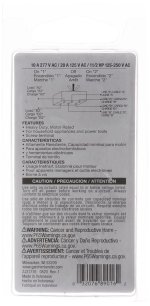joshuabjorg
1 mW
- Joined
- Feb 19, 2022
- Messages
- 19
Hey gang,
Have an Ariel Rider D-Class that I'd like to add a second battery to. To make matters slightly messier, I'd really prefer adding on a 52v battery to get a little more juice at the top end. So... Couple lines of questioning:
1) should I go in parallel? And if so, anybody have a handy wiring configuration or should I really cough up the cash for a battery blender (which seems criminally overpriced)? Like the elegance of parallel, but also not super into anything exploding.
2) if I go with a switch instead, any suggestions for a waterproof switch that can handle 30a at 48v? And any concerns with voltage cutoff settings if I'm regularly switching between 48v and 52v?
Thanks
Have an Ariel Rider D-Class that I'd like to add a second battery to. To make matters slightly messier, I'd really prefer adding on a 52v battery to get a little more juice at the top end. So... Couple lines of questioning:
1) should I go in parallel? And if so, anybody have a handy wiring configuration or should I really cough up the cash for a battery blender (which seems criminally overpriced)? Like the elegance of parallel, but also not super into anything exploding.
2) if I go with a switch instead, any suggestions for a waterproof switch that can handle 30a at 48v? And any concerns with voltage cutoff settings if I'm regularly switching between 48v and 52v?
Thanks




